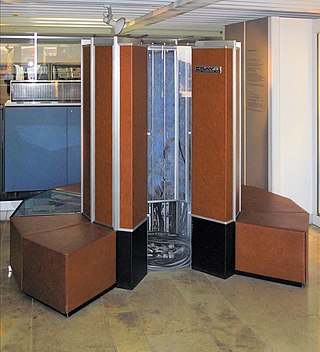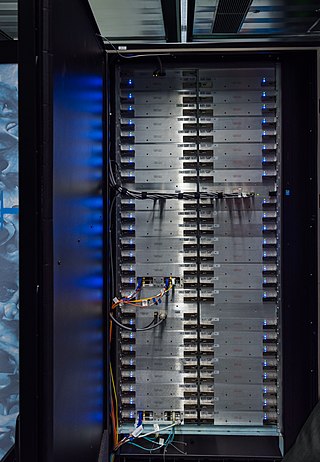Floating-point arithmetic
| Name | Unit | Value |
|---|---|---|
| kiloFLOPS | kFLOPS | 103 |
| megaFLOPS | MFLOPS | 106 |
| gigaFLOPS | GFLOPS | 109 |
| teraFLOPS | TFLOPS | 1012 |
| petaFLOPS | PFLOPS | 1015 |
| exaFLOPS | EFLOPS | 1018 |
| zettaFLOPS | ZFLOPS | 1021 |
| yottaFLOPS | YFLOPS | 1024 |
| ronnaFLOPS | RFLOPS | 1027 |
| quettaFLOPS | QFLOPS | 1030 |
Floating-point arithmetic is needed for very large or very small real numbers, or computations that require a large dynamic range. Floating-point representation is similar to scientific notation, except everything is carried out in base two, rather than base ten. The encoding scheme stores the sign, the exponent (in base two for Cray and VAX, base two or ten for IEEE floating point formats, and base 16 for IBM Floating Point Architecture) and the significand (number after the radix point). While several similar formats are in use, the most common is ANSI/IEEE Std. 754-1985. This standard defines the format for 32-bit numbers called single precision, as well as 64-bit numbers called double precision and longer numbers called extended precision (used for intermediate results). Floating-point representations can support a much wider range of values than fixed-point, with the ability to represent very small numbers and very large numbers. [2]
Dynamic range and precision
The exponentiation inherent in floating-point computation assures a much larger dynamic range – the largest and smallest numbers that can be represented – which is especially important when processing data sets where some of the data may have extremely large range of numerical values or where the range may be unpredictable. As such, floating-point processors are ideally suited for computationally intensive applications. [3]
Computational performance
FLOPS and MIPS are units of measure for the numerical computing performance of a computer. Floating-point operations are typically used in fields such as scientific computational research, as well as in machine learning. However, before the late 1980s floating-point hardware (it's possible to implement FP arithmetic in software over any integer hardware) was typically an optional feature, and computers that had it were said to be "scientific computers", or to have "scientific computation" capability. Thus the unit MIPS was useful to measure integer performance of any computer, including those without such a capability, and to account for architecture differences, similar MOPS (million operations per second) was used as early as 1970 [4] as well. Note that besides integer (or fixed-point) arithmetics, examples of integer operation include data movement (A to B) or value testing (If A = B, then C). That's why MIPS as a performance benchmark is adequate when a computer is used in database queries, word processing, spreadsheets, or to run multiple virtual operating systems. [5] [6] In 1974 David Kuck coined the terms flops and megaflops for the description of supercomputer performance of the day by the number of floating-point calculations they performed per second. [7] This was much better than using the prevalent MIPS to compare computers as this statistic usually had little bearing on the arithmetic capability of the machine on scientific tasks.

FLOPS on an HPC-system can be calculated using this equation: [8]
This can be simplified to the most common case: a computer that has exactly 1 CPU:
FLOPS can be recorded in different measures of precision, for example, the TOP500 supercomputer list ranks computers by 64 bit (double-precision floating-point format) operations per second, abbreviated to FP64. [9] Similar measures are available for 32-bit (FP32) and 16-bit (FP16) operations.













